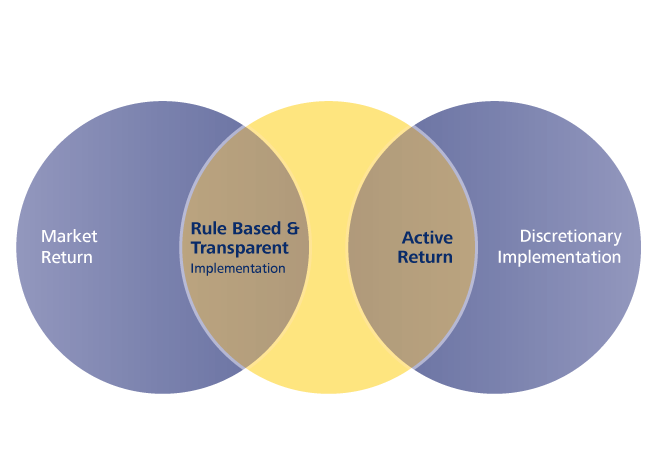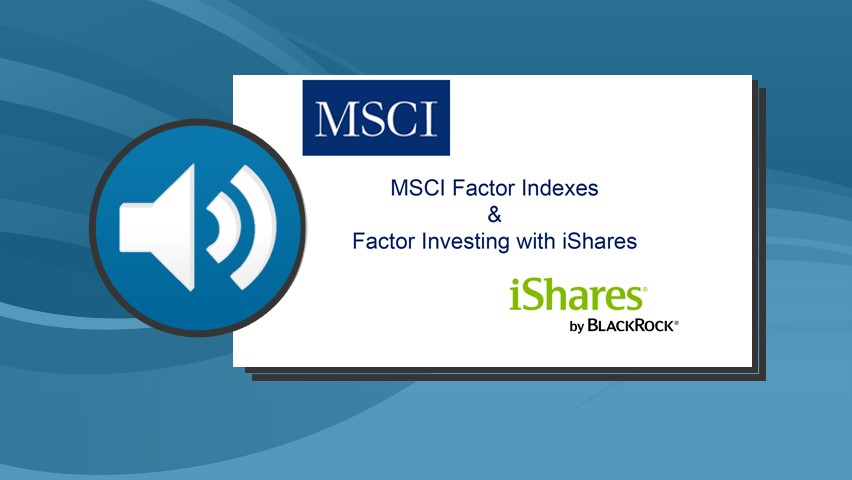MSCI Factor Indexes Factor
Post on: 16 Март, 2015 No Comment

The MSCI Minimum Volatility Indexes are designed to reflect the performance of a minimum variance (or managed volatility) equity strategy. Each MSCI Minimum Volatility Index is calculated by optimizing a traditional cap weighted parent MSCI index to attain the lowest level of volatility for a given set of constraints. These constraints are generally designed to ensure index replicability and investability and include limits to index turnover and to index constituent, sector and country weights relative to the parent index.
The MSCI Risk Weighted Indexes are designed to tilt a traditional market cap weighted index towards stocks with lower risk. Each MSCI Risk Weighted index reweights all the constituents of a cap weighted MSCI parent index so that stocks with lower historical return variance are given higher index weights. By emphasizing low volatility stocks in this way, the MSCI Risk Weighted Indexes have historically exhibited lower realized volatility compared to their respective parent MSCI indexes, while maintaining reasonable liquidity and capacity and a full representation of the parent index.
The MSCI Risk Control Indexes aim to replicate the performance of a strategy that targets a specific level of risk (10%, 12.5%, 15% or 17.5%) by dynamically varying the weights of an underlying MSCI parent index and a cash component-in accordance with the realized volatility of the index. The weights of the MSCI parent index and the cash component are determined daily based on the ratio of the specific risk level and the realized volatility of the MSCI parent index and are subject to a maximum leverage.
The constituents of the MSCI Value Weighted Indexes are weighted based on four fundamental accounting variables: sales, earnings, cash earnings and book value. There is no security selection based on fundamental data. Rather, each MSCI Value Weighted Index includes all the constituents of its MSCI parent index helping maintain the equivalent tradability, investment capacity and turnover characteristics of the parent index. The MSCI Value Weighted Indexes are effectively tilted towards stocks with value characteristics and relatively lower valuations.
The MSCI Quality Indexes are designed to reflect a quality growth investment strategy by identifying stocks with high quality scores based on three main fundamental variables: high return on equity (ROE), stable year-over-year earnings growth and low financial leverage.
The MSCI Quality Mix Indexes are an equal weighted combination of the MSCI Value Weighted, MSCI Minimum Volatility and MSCI Quality Indexes in a single composite index. They aim to represent the performance of quality, value and low volatility factor strategies across global equity markets.
The MSCI Momentum Indexes are designed to reflect the performance of an equity momentum strategy by emphasizing stocks with high price momentum.
The MSCI High Dividend Yield Indexes aim to capture the high dividend yield equity opportunity set within a standard MSCI parent index, by including only securities that offer a high dividend income and quality characteristics relative to that of the parent index. The MSCI HDY Indexes exclude securities that do not meet certain quality factors, such as those based on return on equity (ROE), earnings variability, debt to equity (D/E), and they exclude securities performing in the bottom 5% of the parent index, with negative 12-month price performance.
The MSCI Equal Weighted Indexes weight each security equally at each quarterly index rebalancing, removing the influence of prices from the weighting scheme at rebalance. Equal weighted indexes can provide greater exposure to smaller cap index constituents than cap weighted indexes where larger cap constituents have the dominant impact on index valuations.
The MSCI GDP Weighted Indexes are regional indexes designed to reflect the size of a countrys economy, or gross domestic product (GDP), rather than the size of its equity market. Some investment professionals prefer to weight countries in a regional index by GDP rather than by market capitalization because GDP figures tend to be more stable over time than equity markets. GDP weighted indexes also tend to provide higher exposure to countries with above average economic growth, such as emerging markets, and to underweight countries with relatively high valuations.

The MSCI Barra Factor Indexes are designed to reflect Barra risk model factors that can represent important drivers of both risk and return in equity markets. MSCI Barra Factor Indexes are constructed through optimization and aim to achieve constant high exposure to a target factors, very low active exposure to all other factors and minimum tracking error relative the standard MSCI parent index. Current factors include Momentum, Value, Earnings Yield, Volatility and Leverage.
The MSCI Market Neutral Barra Factor Indexes are designed to reflect a theoretically pure single factor return for a given region or country, while remaining investable and replicable and with controlled turnover. The indexes are also designed to reflect the performance of a market neutral strategy which has historically exhibited low correlation with the performance of the broad equity market.
The MSCI Factor Tilt Indexes aim to reflect the performance of specific factors such as Quality, Momentum and Volatility. These indexes are created by tilting the market capitalization weights of all the constituents in the parent index based on the relevant factor scores and then re-weighting them, taking into consideration enhanced investability and high investment capacity of constituents. These new indexes are designed for institutional investors for whom investability is a critical consideration, such as large-scale asset owners and managers.
The MSCI Dividend Masters Indexes aim to reflect the performance of the opportunity set of companies with a track record of consistently growing dividends.
The MSCI Enhanced Value Index aims to reflect the performance of securities that exhibit stronger value characteristics relative to their peers within the corresponding GICS sector. The value characteristics are defined by value descriptors such as Price-to-Book Value (P/B), Price-to-Forward Earnings (Fwd P/E) and Enterprise Value-to-Cash flow from Operations (EV/CFO). The selection-based index has exhibited strong positive active exposure to Value factor historically with minimal active exposure to other style factors (GEM2L) historically. The index methodology also targets to have minimal active weights on sectors while ensuring reasonably high trading liquidity and investment capacity of constituent companies.














